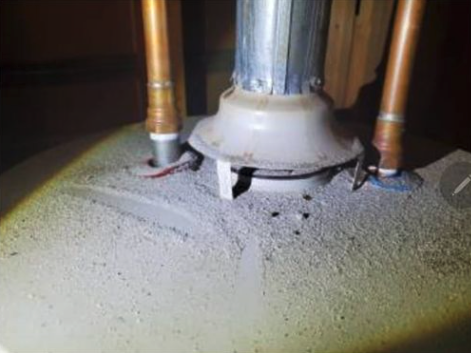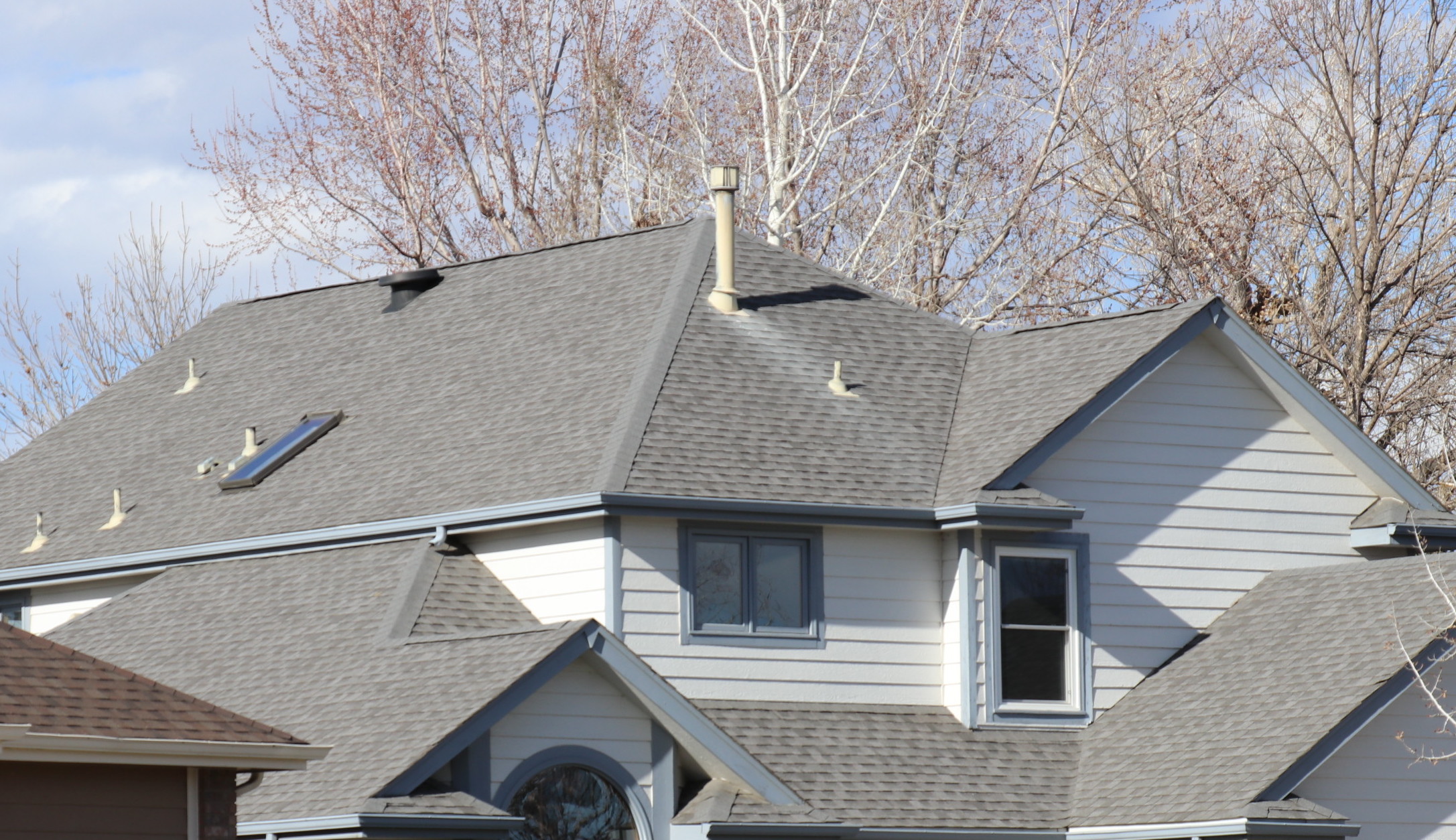Due to inadequate combustion exhaust venting, combustion gases cool before they reach the exterior. This is usually caused by an excessively long- or too many bends in the- combustion vent.
Cooling combustion gases condense on the inside of the galvanized steel vent where the condensation causes corrosion. The first, kinda liquidy, gooey product of this corrosion is zinc hydroxide, which slides down the inside of the vent onto the heating appliance (furnace or boiler) where the rest of the moisture evaporates, leaving a white, powdery residue that is zinc oxide. You can sometimes also see it leaking from joints in the vent above the heating appliance (furnace, boiler, or water heater).

Photo courtesy of Kyle Phillips
Now, sometimes this condensation takes place near the vent termination above the roof. This makes sense because the vent will be colder above the roof, especially in cold climates, and colder vent means more condensation will develop. Because this takes place way up high, the zinc hydroxide will have a long way to travel before it fall out the bottom of the vent connector, and it may also become trapped at bends in the vent.
At any rate, some of the gooey zinc hydroxide will turn to powdery zinc oxide while it’s still inside the vent, and some of this powder will be caught up in the slipstream of the draft from the heating appliance and will be carried up, discharged out the vent and deposited on the roof, and this is why you see white residue on the roof below combustion vents.
On older combustion appliances with vents made of steel that is not galvanized, this residue may be brown because the corrosion product of steel is iron oxide, not zinc oxide.

This condition allows you to spot problems before you even enter the home!
